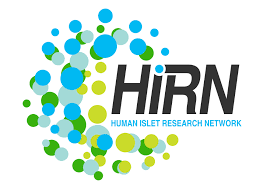Leaving Community
Are you sure you want to leave this community? Leaving the community will revoke any permissions you have been granted in this community.
Human Pancreatic Analysis Program (HPAP) launched RRIDs for donor pancreas biosamples
The RRID and dkNET team has been collaborating with the Human Pancreatic Analysis Program (HPAP) working on identifying donor pancreas biosamples. Here is the release announcement from the Human Pancreatic Analysis Program (HPAP):
"HPAP (Human Pancreatic Analysis Program) is launching RRIDs for donor pancreas biosamples
The primary goal of the Human Pancreatic Analysis Program (HPAP) is to perform deep phenotyping of the human pancreas. This is being done to improve understanding of the cellular and molecular events that lead to beta cell loss in type 1 diabetes (T1D) and beta cell insufficiency in type 2 diabetes (T2D). There are currently over 400 registered users on PANC-DB (our public database and user interface). In order to track all studies utilizing HPAP donors, we recently implemented the Research Resource Identifiers (RRID) system to tag all their donors in addition to using the HPAP IDs already in use. This would give users an opportunity to cite their source at a granular level, where they can cite not only the database, but the donors themselves. By employing RRID for our samples, we are now joining hands with Integrated Islet Distribution Program (IIDP) and network for Pancreatic Organ Donors with diabetes (nPOD) who already utilize the RRID to tag their BioSamples.
RRID is based on public information that is not personally identifiable unlike the UNOS number, making it a unique identifier for referencing a source for research. This identifier is generated in collaboration with the National Center for Biotechnology Information (NCBI) and dkNET, through which RRID metadata is catalogued and tracked. As part of this process, HPAP is now registered with the BioProject database with the accession PRJNA718330. All HPAP donors have also been added to this BioProject and registered with the biosample database. This database generates the SAMN number for each BioSample, which in turn is utilized to generate the RRID, changing the syntax to “RRID:SAMNXXXXXXXX” for any biosample, such as “RRID:SAMN19842599” for HPAP-070. This is the syntax one would use to cite all HPAP donors in their manuscripts moving forward.
Users on PANC-DB will be directed to the resource identification portal, where they can search for our donors using the HPAP-ID or the SAMN number and obtain the required RRID and other relevant information for citation.
PANC-DB will soon be publishing the RRIDs along with more information in the next few weeks. Visit PANC-DB and keep an eye out for updates on this in the upcoming HIRN newsletters"
For dkNET User, now you can also find HPAP pancreas biosamples at the dkNET Resource Reports - Biosamples (https://dknet.org/data/source/nlx_143929-1/search?q=HPAP&l=HPAP
). You can find the basic information, track the resource usage and find the collaborators in the future! Here is an example of Resource Reports for SAMN19842599:
https://dknet.org/data/record/nlx_143929-1/SAMN19842599/resolver?
Source and more information:
1. Human Pancreatic Analysis Program (HPAP)
2. dkNET Resource Reports - HPAP Biosamples: https://dknet.org/data/source/nlx_143929-1/search?q=HPAP&l=HPAP





